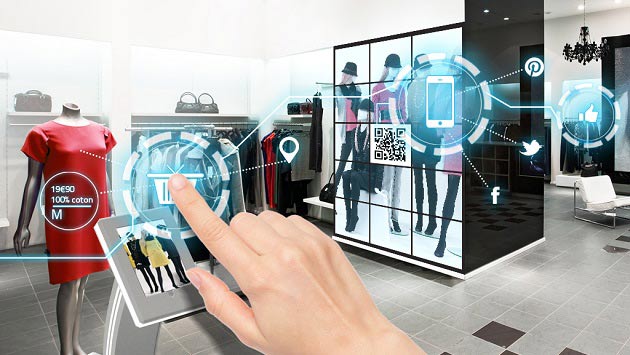 Given the rise of e-commerce giants such as Amazon and latest advances in technology (i.e. AR), some blog posts already predict physical retails stores a dark future. This post, on the other side, argues that stores are here to stay as they offer several advantages over the online shopping experience and fulfill a critical role in retailers’ value propositions. In fact, smart retailers do not opt for an online or offline pure play but rather leverage the strengths of both retail channels to drive sales. A key strategy here is omnichannel integration.
Given the rise of e-commerce giants such as Amazon and latest advances in technology (i.e. AR), some blog posts already predict physical retails stores a dark future. This post, on the other side, argues that stores are here to stay as they offer several advantages over the online shopping experience and fulfill a critical role in retailers’ value propositions. In fact, smart retailers do not opt for an online or offline pure play but rather leverage the strengths of both retail channels to drive sales. A key strategy here is omnichannel integration.
The omnichannel approach appreciates the fact that customers often switch channels in the sales process and seeks to offer them a seamless shopping experience while they are hopping among online and physical stores, smartphones, tables, social media, call centers and email for example. A full integration is a tedious task, especially from an IT perspective, as it requires a company to track their customers’ actions across many different sales channels, to analyze tons of data and to target them with personalized offers. Moreover, in order to avoid confusion and customer dissatisfaction, all prices should be fully integrated across all channels, so it should be guaranteed that promotions in one channel are streamlined with the sales activities in other channels.
However, if done well, retailers will be rewarded with more lucrative relationships with their customers and a deeper understanding of customer behavior and preferences. Therefore, we already see retailers around the world launching omnichannel initiatives. One of the most prominent and widely adopted initiatives is „click-and-collect“. Here, customers have the opportunity to purchase an item online and collect it in-store (often the same day). However, it also allows customers to reserve specific products, and to schedule in-store appointments with sales staff to clarify remaining questions before the final purchase decision is made. Such initiatives offer retailers at least two advantages: 1) customers are kept in own channels, e.g. do not walk away and buy with competitors 2) if the final conversion is made in-store, up- and cross-selling opportunities arise, further driving revenues. Moreover, by integrating their stores into the customer journey, retailers can outcompete online pure players who cannot offer value-added services provided in stores. Imagine for example you order a hiking backpack online and let it deliver to the store where you have an employee setting it up for you to ensure perfect fit. In addition, the sales staff gives you advice on the best hiking routes in the area and encourages you to follow the company-own travel blog on Instagram. Unnecessary to say that the blog always features the newest products and is likely to initiate new purchases in the future.
All in all, the successful integration of online and offline channels and the use of technology to facilitate omnichannel initiatives gives omnichannel retailers a competitive edge over online pure players.
References
Maekelburger, B., Schmaus, B., & Bovensiepen, G. (2015). The 2015 Global Omnichannel Retail Index: The future of shopping has arrived (Rep.). Strategy&.
Intel. (2015). Omni-Channel Technology Gives Retail Marketers a New Edge. Intel Intelligent System

